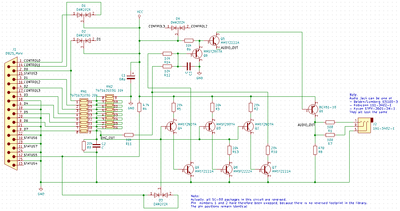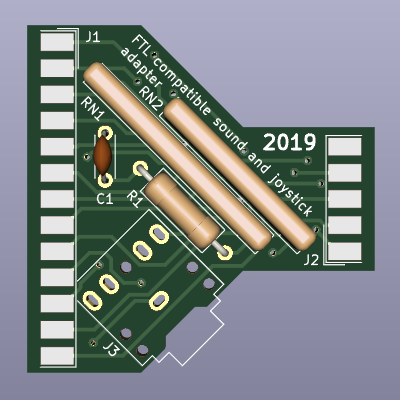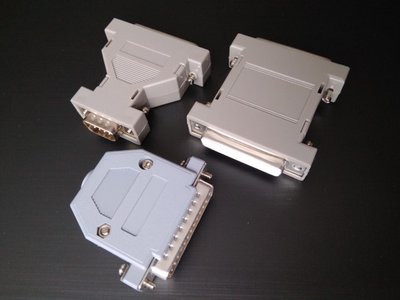Benedikt wrote:Paralel wrote:The one thing I can't figure out in the Sound Jr. Design is why he used two discreet resistor packs, rather than an integrated R2R ladder/network (depends on your choice of words really, seems to be a temporal thing, used to be called ladders, now called networks...), which should have produced superior results. An integrated R2R is what the original Speech Thing used, so they were obviously available at the time.
Can you see a design reason I've overlooked for why one would use two discrete resistor packs? If not. using an integrated R2R ladder/network with a +/- 0.5 LSB would produce a far superior outcome. You'd be making an improved version of the SoundJr at that point.
The only reason that comes to mind is that there might not have been any SMD R2R networks at the time. I can still only find one.
Ah, of course, duh, I totally blanked on that. That's what I get for looking at electronic schematics in the middle of the night. Yes, the only common integrated R2R networks are indeed thru-hole, and that was indeed what was used in the Covox. With the size limitations he was working with, he couldn't use something like that, it needed to be SMD. So, it was a space constraint. So obvious to me now. I hate making simple mistakes like that in thought. Although, it seems like given the space remaining in an LPT shaped dongle [the CVX4 is a good example, the PCB takes up the entire space one could use for a simple dongle shaped adapter), one could use a larger PCB (but maybe making larger, custom shaped PCB's was harder back then?)
I agree with the amp design, I don't know what he was thinking, but, the original designer's pedigree is in electronics, and sound/speech systems in particular (actually, despite being in his 80's now, he still works as the senior design engineer for a company that produces professional grade telephony products, so he's still working in the field all this time later. He's pretty amazing. Probably one of the last of the "old school" engineers still out there). I'm sure he has a reason, I just don't have the education to understand what it was. Now it makes me want to sit down and crunch enough information to try and noodle it out. I might have to ask a friend of mine. He's a master at this sort of thing, and has a special love of reverse engineering (...he's just a little... 'eccentric'...).
I did the math, and if the resistors in the packs are within 0.1% tolerance of each other, and the other resistor pack, it would essentially create 9+ bits of precision, so you could actually lose one bit, and still be +8-bit, (or 0.2% for almost exactly 9-bits of precision, and as a result 8-bits with the loss of one for volume control). We can't really know what the LSB tolerance is in this design because we'd need to know the variance between the resistors inside each pack, and the variance between the packs themselves to be able to calculate that. So, theoretically, it is possible, but, in practice, rather unlikely, since that is a very tight tolerance between discreet pieces that were never meant for such tight tolerance.
When you assemble it, the proof will be in the pudding. If it respond to the software for the SoundJr. exactly like the original, then that confirms the schematic is 100% and you've managed to salvage the working theory of one of the best pieces of tech that represents this group of devices from the dustbin of time.
Once the SoundJr. RE is confirmed. It would be interesting to try and integrate FTL detection into it (it's just a jumper wire from what I understand, so it could be controlled with a simple hardware switch on the side of the device) as well as the DSS into a single device. A 3-in-1 adapter (Enhanced Covox Speech Thing/FTL/DSS [using a 3 position switch for selection]) that can be powered just from the LPT port and drive headphones directly would really be an accomplishment. Something no one else has done. I'd imagine to fit it all in there, you'd have to switch to a more Covox housing (square board) rather than the SoundJr. housing.


